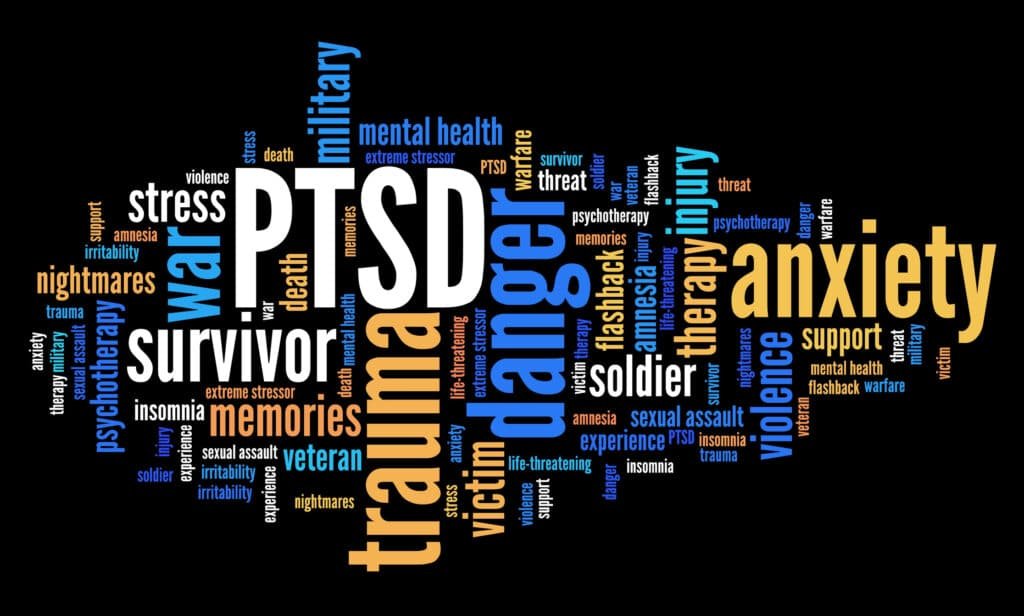
Posttraumatic Stress Disorder (or PTSD) occurs after one has gone through a traumatic or terrifying event in their life. It’s an anxiety disorder and includes a range of symptoms, such as flashbacks to the event, emotional numbness, feelings of guilt or shame, trouble concentrating, and avoiding things that remind them of what happened.
Someone can get PTSD after they experience a traumatic event in their life. Someone can also get PTSD during an event that goes on for a long period of time, like military service or a natural disaster. There’s no single cause, and many people who experience trauma will not develop PTSD. PTSD May begin to develop immediately after the traumatic exposure, but can also take weeks or years before impairing symptoms occur.
The most common cause of PTSD is being involved in a traumatic event or series of events, like military combat, serious accidents, natural disasters, terrorist attacks, and serious assaults. Sexual assault and physical abuse are also linked to the development of this disorder.

The symptoms of PTSD fall into five main categories:
- Re-experiencing the traumatic event, either as if it were happening again (“flashbacks”) or in a more generalized way.
- Avoidance of any thoughts, feelings, or conversations that reminds one of the traumatic event(s).
- Increased and unfounded irritability or anger.
- Difficulty sleeping (insomnia), changes in appetite, and difficulty concentrating when exposed to stimuli associated with the trauma. Insomnia related to PTSD may be a result of a fear of going to sleep or as a result of recurrent nightmares.
- Hypervigilance–always being on guard for anything that might be a sign of danger. These symptoms can last a few days to months after the trauma ends.
After a traumatic situation, here are some things that might help:
- Find ways to calm yourself down, like counting backward from ten or taking deep breaths.
- Reach out for support and talk about it with people you trust. It is important for those around you to truly be supportive of what you are going through. The last thing you want is for your trauma to be minimized or dismissed.
- Deal with and process feelings as they come up – crying, feeling angry, being frustrated, etc.
- Try hard not to let any single event take over your life and make everything worse (minimize exposure).
- Finally, seek professional help. Psychotherapists and psychiatrists can help, even very early on.
PTSD is often treated with psychotherapy, teaching new coping skills, and medications may help. Treatment for PTSD differs from person to person, depending on the severity of their personal triggers. There are two sorts of psychotherapeutic treatment methods: cognitive techniques and exposure therapy.
Antidepressants can diminish brain activity in regions responsible for fear or anxiety responses that lead you to avoid things, which helps you feel less frightened when confronted by your traumatic memories, including nightmares.
However, they do not address the source of psychological trauma that leads to PTSD nor its effects on thoughts and behaviors- just the emotions associated with it.
Generally, the best treatments for PTSD are exposure therapies. Exposure therapy is a type of psychotherapy that can be used to help people with PTSD deal with their anxiety symptoms.
In exposure therapy, the person is asked to recount his/her traumatic memories in detail while in the therapist’s office and then imagined outside the office.
The person may also be asked to do things or experience things that may make them feel anxious in order to re-live and repair those traumatic memories so they no longer trigger fear responses.
Unfortunately, even after receiving enough therapy to no longer qualify for the diagnosis of PTSD, over one-third of patients will continue to experience ongoing difficulties with concentration and other cognitive abilities. Additional forms of psychotherapy and medications may help alleviate these symptoms.